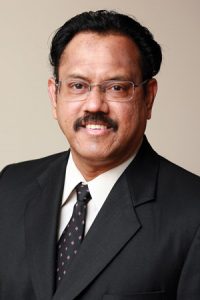 By Stephen Shaw
By Stephen Shaw
In 1960 the American Marketing Association’s Journal of Marketing published a landmark article by a Pillsbury executive named Robert Keith titled The Marketing Revolution. In a succinct 4-pages Keith chronicled the evolution of marketing at Pillsbury from the founding of the company in 1869.
The point of the history lesson was that Keith had concluded that business was undergoing a radical change in philosophy that would transform marketing from a peripheral role to become a “dominant function”. He stated that “Companies revolve around the customer, not the other way around”, and that “As the concept gains ever greater acceptance, marketing is emerging as the most important single function in business”.
Pillsbury’s new purpose, he announced, was no longer to simply make and sell baking products but to “satisfy the needs and desires, both actual and potential, of our customers”. The Marketing Department, up until then limited to managing advertising, would “direct and control” all of the processes that took its products from the assembly line to market. Newly created brand managers would have full accountability for the P&L of each product.
Keith’s prediction was not inherently revolutionary — the legendary management consultant Pete Drucker had said much the same thing six years before, declaring that “There is only valid definition of business purpose: to create a satisfied customer”, and that “the business enterprise has two — and only these two — basic functions: marketing and innovation”. But for most businesses, marketing was still largely associated with “pushing” products into stores so they could be sold. The idea that marketing, as a central controlling function, could become a business driver was farfetched given its narrow mandate at the time.
Soon after Keith’s article appeared, many prominent marketing academics came forward to make a similar case — most notably, the renowned Harvard Professor Theodore Levitt who that same year wrote his famous HBR article titled “Marketing Myopia”, saying that “to continue growing, companies must ascertain and act on their customers’ needs and desires, not bank on the presumptive longevity of their products.”
Keith’s so-called revolution turned out, in the end, to be short-lived. For a while, marketing did rise to prominence as a strategic function, involved in every aspect of product development and commercialization. But that is certainly not the case today. Marketing’s role has shrunk in importance, reduced to what it started out doing, looking after advertising and promotion. That’s how most CEOs think of marketers, as the ad department. But the other irony is that for businesses to succeed today, they must actually follow Keith’s prophetic advice: switch from selling products to as many people as possible, at the highest price possible, to creating valuable customers by anticipating and meeting their needs.
 Professor V Kumar calls this “transformative marketing”: placing customers at the centre of the organization. And making it happen will indeed require a revolution in how business operates. Because today marketers are still expected to push products, driven by an inside-out, rather than an outside-in, orientation. And that “myopia” makes businesses vulnerable to being blind-sided by events.
Professor V Kumar calls this “transformative marketing”: placing customers at the centre of the organization. And making it happen will indeed require a revolution in how business operates. Because today marketers are still expected to push products, driven by an inside-out, rather than an outside-in, orientation. And that “myopia” makes businesses vulnerable to being blind-sided by events.
 Professor Kumar was an early champion of customer relationship management and engagement. A former editor of the Journal of Marketing himself, he has published hundreds of scholarly articles and is acknowledged as one of the top marketing academics in the world. His latest book, Intelligent Marketing, explores the implications for marketing as new-age technologies like AI and IOT begin to transform society.
Professor Kumar was an early champion of customer relationship management and engagement. A former editor of the Journal of Marketing himself, he has published hundreds of scholarly articles and is acknowledged as one of the top marketing academics in the world. His latest book, Intelligent Marketing, explores the implications for marketing as new-age technologies like AI and IOT begin to transform society.
Shaw: CEOs today have little confidence in their CMOs. We also know the average tenure of a CMO keeps dropping. Even the title of CMO has been jettisoned by some companies. Is marketing in a state of crisis?
Kumar: I would say it’s in a transformative stage. Thirty years or so ago, you had traditional advertising: TV advertising, print advertising, billboard advertising. None of that spending could be easily tied to business outcomes. That’s because the primary purpose of advertising then was to inform, persuade, and remind — nothing directly contributed to generating sales. But with the rise of CRM and data-driven marketing in the 1990s, we could track what individual customers were buying, how much they were buying, when they were buying. The transformative shift began at that point in time. And today, the majority of marketing spending is on digital media and very little on traditional advertising. Customers can now control when and what they see. And that trend toward personalization and customization is going to prevail in this coming era of transformative marketing.
Shaw: How can marketing connect it’s spending more closely to business outcomes than it does today?
Kumar: What we want to measure is revenue contribution to the company. And to do that we have much more precise measurement and modeling tools now. We are also able to precisely say what message should be given to which customer, for how long, and the effect of that. There are really just 10 marketing metrics that matter. They are customer lifetime value; customer brand value; customer referral value; customer influence value; customer knowledge value; customer engagement value; salesperson lifetime value; donor lifetime value; employee engagement value; and business reference value.
Shaw: What you’re suggesting is that we can actually model the ideal spend to achieve specific outcomes. But isn’t the other challenge that we don’t really know what customers would have bought anyway? Are you suggesting that there is a way to model your way around some of these unknowns?
Kumar: You raise a beautiful point. So many companies have a pre-set marketing budget. But we tell them: Let’s look at your customer base, let’s look at your customer acquisition rate, and then let’s profile the high customer lifetime value customers to know which prospects to go after. Let’s look at your customers to see how much they are likely to buy. And so, to make them buy that much, how much do we have to spend on them, looking at historical data patterns? And so we come up with a number for all the customers plus the yet-to-be acquired customers and say what the marketing budget should be.
Shaw: Let’s say you’re the newly appointed CMO of a major enterprise, and you probably have no more than three years to make your mark. The CEO is expecting you to drive revenue growth. As that new CMO, what approach would you take?
Kumar: First we would need to understand what consumers want and plan to deliver it. Not every customer has the same wants: some are price-conscious, some are quality conscious, some are convenience conscious. So we have to know the size of those segments, and where we can compete. Next is defining the experience we want to provide. And then we need to define the desired market to go after: Is my target audience just the domestic market or is it a global market? And then if it’s a global market, I need to make decisions in terms of a branding strategy: Do I keep the same brand or a different brand? Is the product the same? Is the pricing strategy the same? But most importantly, what am I accountable for, the top line or the bottom line? If the company CEO says to the CMO you need to deliver me the top line and bottom line, and the market is saturated, what can the CMO do? They can go after global markets. So how do they pick the market? Should they follow a waterfall strategy or a sprinkler strategy? A waterfall strategy involves sequentially entering foreign markets. A sprinkler strategy is simultaneously entering multiple markets. If you go sequentially, you need to show that there is a gain from one market to the other — what we call a lead-lag country effect. And then once I go to market, how many markets do we enter?
Shaw: To win a seat at the corporate strategy table, marketing has to offer business solutions that the CEO and CFO will recognize. And that’s not the case today. Is that because marketing itself is drawn to all of the things that the CEO and CFO doesn’t care about?
Kumar: As I said at the start, we are in a transformative phase, so marketing has not been given the respect it deserves. For every problem that the CEO or the CFO faces, marketing needs to come up with a strategic business solution. Why is that not happening today? My daughter is head of marketing for one of the leading fitness clubs in New York — late 20s, already head of marketing. If I explain these general marketing strategies to her, she says, “I’m in the digital world, I know exactly what to do.”
Shaw: Marketing is the brand custodian. Yet it seems to me that performance marketing, much as you’re describing with your daughter, is winning the day over long-term brand-building. What do organizations need to do to bridge that divide?
Kumar: I’ll answer with an example. Harley Davidson used to be a great brand: they would sell 265,000 motorcycles on average a decade ago. But if you look at today’s younger customers, they don’t want big bikes — they’re gas guzzlers, they pollute the environment. So how did this company reinvent itself? It took them years of losing money, but finally: electric scooters, electric motorcycles, that’s what they’re turning to. And because emission is something today’s Gen X, Gen Y, Gen Z, care about, they’re now transforming. Today’s brand leaders are a younger generation who are going to transform businesses by meeting the needs of their cohort.
Shaw: Marketing is still a grab-bag of copycat tactics. Maybe one of the ways to become more strategic is for marketing to own the corporate vision and purpose.
Kumar: As far as it affects the value proposition for the company, the answer is positively yes. Because today we are moving from maximizing the firm’s profit to maximizing the wellbeing of stakeholders: Employees, customers, suppliers, distributors, the environment, and the community. And of course, the firm’s investors. So the question is, how should the stakeholders be prioritized? For example, is engaging employees more important than engaging customers? Better to go with engaging customers first, and then employees second, because not every company is willing to empower their employees. Then who is the third stakeholder? The purpose has to be tied to the community, and to the customers in that community.
Shaw: Marketing should be driving that discussion, I expect.
Kumar: Yes, marketing should be driving it. There is no question about marketing not driving it.
Shaw: There’s a general acceptance now that the classical marketing planning model is too slow-moving. We’ve recently seen the adoption of “digital pods” to speed up market execution, made up of multi-disciplinary teams. For marketing to become more of a strategic lead in business, what else needs to change?
Kumar: First, we have to educate the C-suite. Even today, there is a tug of war between marketing and finance. The CFO always wants to maximize ROI. But marketing says: “We live in a non-contractual selling world. If I don’t satisfy all the needs of the customer, I will lose them to the competition, even if my ROI is maximized.” The CFO does not get this — still insists on maximizing ROI. So we have to educate the C-suite as to what is important from a customer perspective. That’s one. Second, the marketing executives themselves should be armed with this knowledge. And the third most important thing is to give marketing more power, more operational discretion. If you keep demeaning marketing, nothing is going to change. And the reason there is hesitation in the C-suite is the CEOs, the CFOs, are old schoolers, old-timers. There needs to be a generational shift in leadership.
Shaw: Marketing is still a collection of silos organized around channels. Is the option to reorganize marketing around the customer journey?
Kumar: Agreed, that’s exactly right. Specifically, the three stages of the customer journey: pre-purchase, purchase, and post-purchase. Let me give you an example of a study we’re doing. A consumer-packaged goods company has a nice new consumer product that they want people to sample. What is the best strategy for them? Should they go to the store and distribute it as an in-store sample? Or should they send it via direct mail to households? Or they should just send a postcard to invite consumers to register and ask for the sample? Which channel — online request, direct mail, or in-store — is going to generate higher sample usage? And given the sample usage, which one is going to generate a better experience? And which one is going to result in a higher level of purchase? And then once the purchase occurs, which one is going to drive repeat purchase? Managing that customer journey is the biggest issue we need to resolve today.
Shaw: Your latest book is called “Intelligent Marketing,” which some people would argue is an oxymoron. How do you see new-age technologies impacting marketing?
Kumar: Our lives will be transformed. As consumers, we want this transformation, therefore marketing has to transform, and if not, the company won’t transform. Marketing transformation is the bridge between consumer transformation and company transformation.
Shaw: Given the next generation coming along, what’s your advice to the aspiring marketer today, to your students, in terms of their future in marketing?
Kumar: This is what I tell them, that every 20 years there is transformation coming. And the next 20 years is a transformative era. You’re not at the tail end of a transformation; you are at the beginning of a new transformation. You’re here not just to shake up business, but the whole world.
Shaw: In other words, if I can synopsize, it’s the best of times for marketers, not the worst of times.
Kumar: Exactly, I would say that.
Stephen Shaw is the Chief Strategy Officer of Kenna, a marketing solutions provider specializing in delivering a more unified customer experience. Stephen can be reached via e-mail at sshaw@kenna.ca




